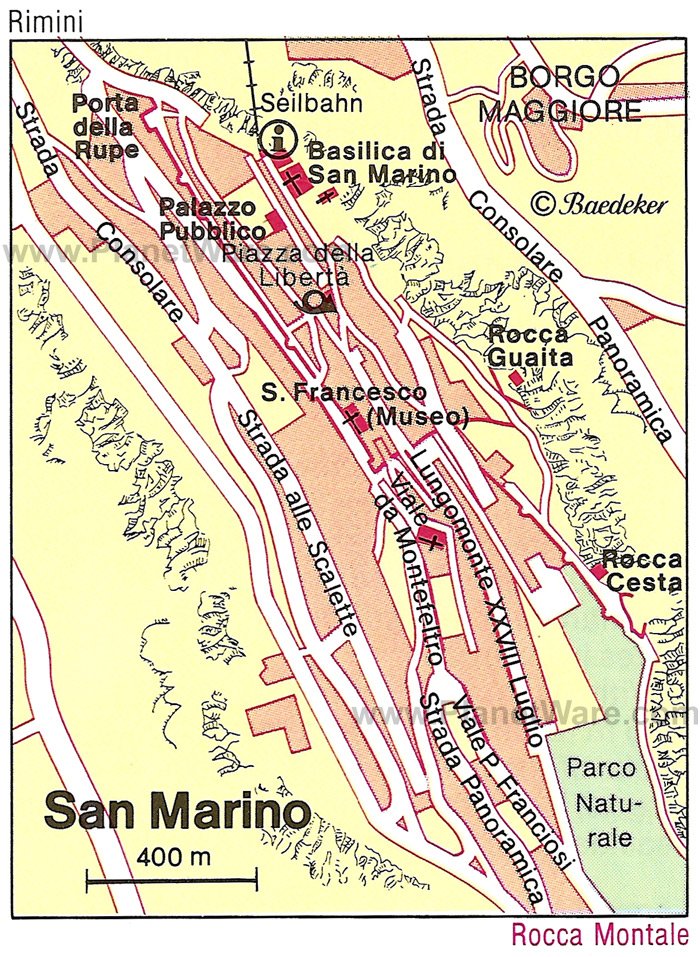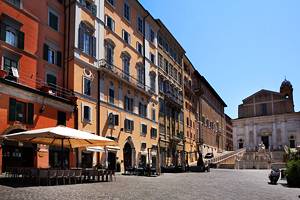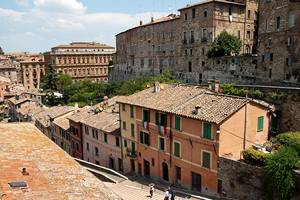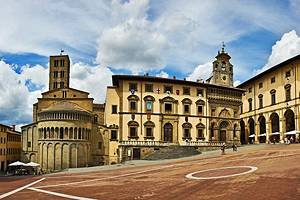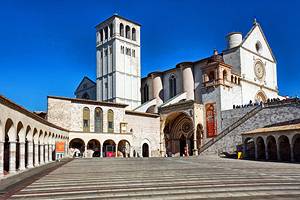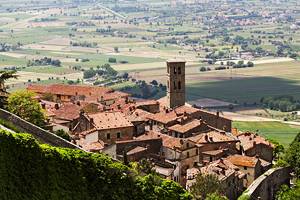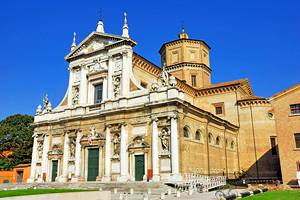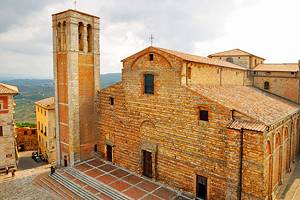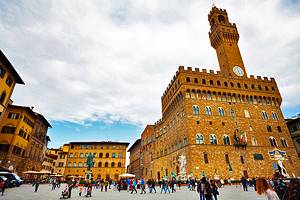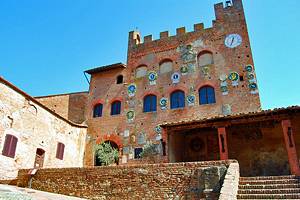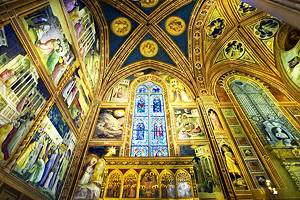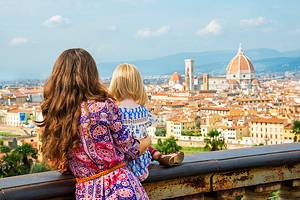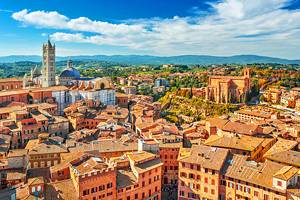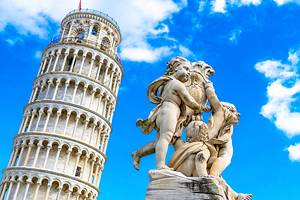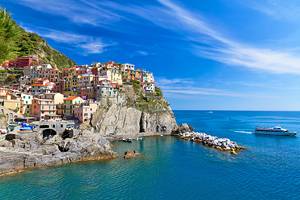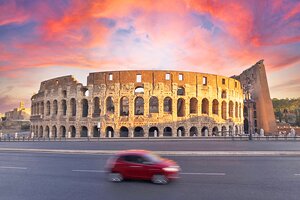Attractions & Things to Do in San Marino
Only 61 square kilometers in size, the little Republic of San Marino is independent, with its own government and laws, even though it is completely surrounded by Italy. The world's oldest sovereign state, it dates from the fourth century AD. Atop the center of this hilly area's highest point, Mount Titano, is the capital city of San Marino.
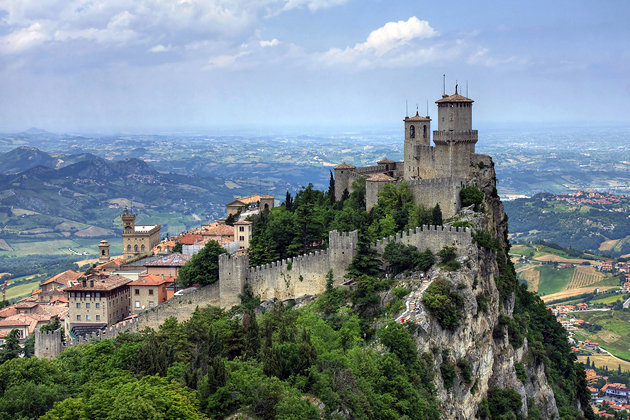
Medieval stone walls enclose the original settlement, built entirely of stone and closed to traffic. A single street leading up to Piazza della Libertà is lined with cafés, restaurants, and shops selling ceramics and duty-free items. Duty-free shopping in San Marino is one of its attractions to visiting Italian tourists.
The three fortresses at the top of the mountain give San Marino its best-known image and are linked by a path that runs along the entire ridge of the mountain.
You'll find plenty of places to see and things to do with this handy list of the top attractions in San Marino.
Rocca Guaita (Guaita Fortress)
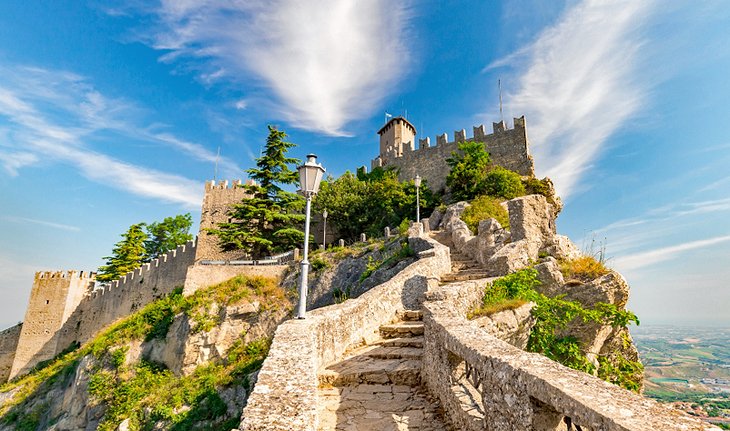
Three fortresses crown the long ridge of Mount Titano, with the city of San Marino clustered at the foot of their walls. The first and earliest of the fortresses is Rocca Guaita, constructed in the 11th century. It served for a time as a prison and was rebuilt several times for different uses until it reached the form we see today, during the 15th-century war between San Marino and the House of Malatesta.
It takes a bit of climbing to get here, but the tower is well worth a visit for the panoramic views of the surrounding countryside from its lofty perch.
Address: Via Salita alla Rocca, San Marino
Monte Titano
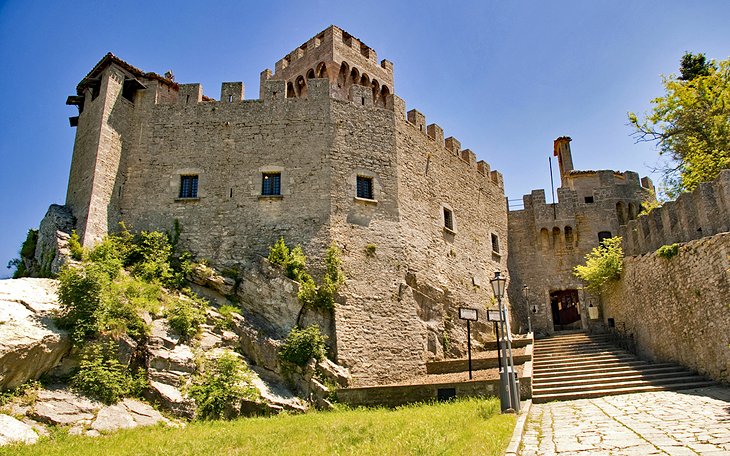
The highest point for miles, 739-meter-high Mount Titano commands spectacular views from any of its three towers. The views stretch northwest to the Apennines and east to the coast, Rimini, and on a clear day across the Adriatic to the Dalmatian coast in Croatia.
Three castles punctuate its long ridge, rising to the highest of them, Rocca Cesta. These are linked by a paved path, the Passo delle Streghe or Witches' Passage. The lower part of this is lined with kiosks selling snacks, drinks, and souvenirs, giving the mountain top the air of a carnival. Rocca Cesta contains a museum of ancient arms with thousands of weapons: swords, knives, and crossbows, as well as early firearms and some unusual experiments, such as a 1730 dagger-gun.
The iconic three towers are shown on both the San Marino flag and coat of arms and are part of a UNESCO World Heritage Site, which includes the old town below.
Address: Via Salita alla Rocca, San Marino
Palazzo Pubblico and Piazza della Liberta
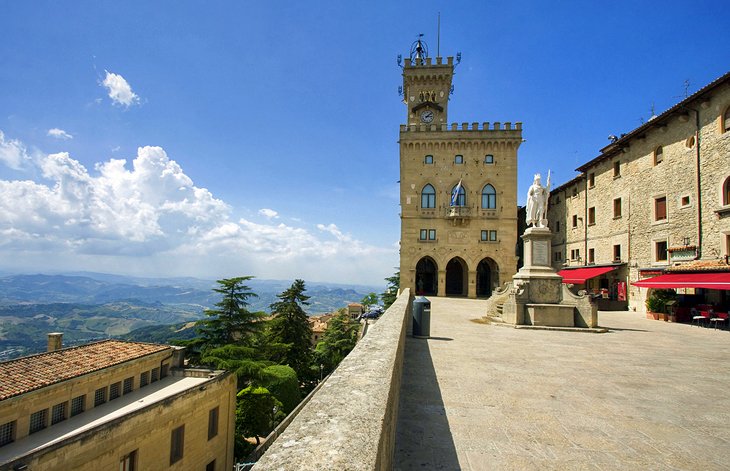
The neo-Gothic-style Government House (Palazzo Pubblico) with its square crenelated tower was designed by the architect Francesco Azzurri in the late 1800s and built of stone quarried on Mount Titano. The facade is decorated with coats-of-arms of the Republic and its four municipalities, and inside, a staircase leads to the Council Hall on the top floor.
Piazza della Liberta is one of the most popular places to visit in San Marino because frequently throughout the day, the Guardie di Rocca change guard in a colorful ceremony. Their uniforms - a dark green double-breasted jacket with white braid, red trousers with a green stripe, hats with red pompoms, and white gaiters - assure that everyone scores great photos of the event.
Address: Piazza della Liberta, San Marino Città
Basilica di San Marino
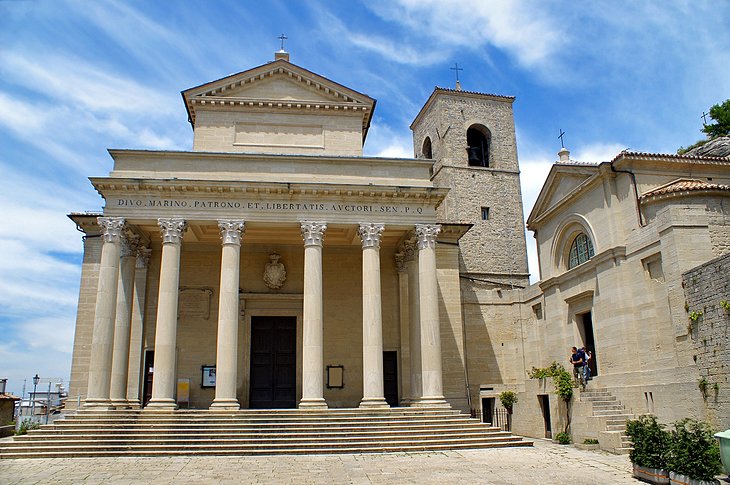
This Neo-classical basilica was built in the early 19th century on the foundations of a fourth-century Romanesque church, also dedicated to San Marino (St. Marinus), which had been abandoned. The interior is classic basilica style, with a long nave and two side aisles lined with altars.
The seven altars are worth seeing for their statuary and paintings, and the high altar has a statue of St. Marinus sculptured by Tadolini. An urn at the high altar contains the relics of St. Marinus.
Address: Piazza Domus Plebis, San Marino Città
Museo di Stato (National Museum)
This excellent museum in the historic Palazzo Pergami Belluzzi shows archaeological collections beginning with Neolithic Age artifacts and later Etruscan and Roman finds. The collections of ancient arts are not confined to the Italian peninsula and include Egyptian antiquities, Byzantine icons, 17th-century paintings, and antique San Marino coins.
Many of the nearly 5,000 items in the museum were donated in the 19th century from private collections of Italian intellectuals and political figures who wanted to show their admiration for the little republic.
Address: Piazzetta del Titano 1, San Marino Città
Museum of Curiosities
Certainly one of the quirkiest and most entertaining things to do in San Marino is the collection of strange objects and peculiar inventions in the Museum of Curiosities, and the stories behind them.
In the collection of about 100 objects are 60-centimeter-tall wooden clogs designed to wear during Venice's high waters, the world's longest fingernails, a 1700s German mousetrap, a trap for fleas, a 17th-century hand-pumped shower, a "nose watch" that works by creating smoke of different scents each hour, and silver covers to protect the long fingernails of Chinese Mandarins. The exhibits are well labeled to provide fascinating glimpses into history.
There are displays about unusual people, too: the world's tallest recorded man and its shortest woman. Even the free transport offered to take you from the municipal parking to the museum is interesting - a 1913 Ford motor-coach.
Address: Via Salita della Rocca 26, San Marino Città
Ride the Cable Car for Views
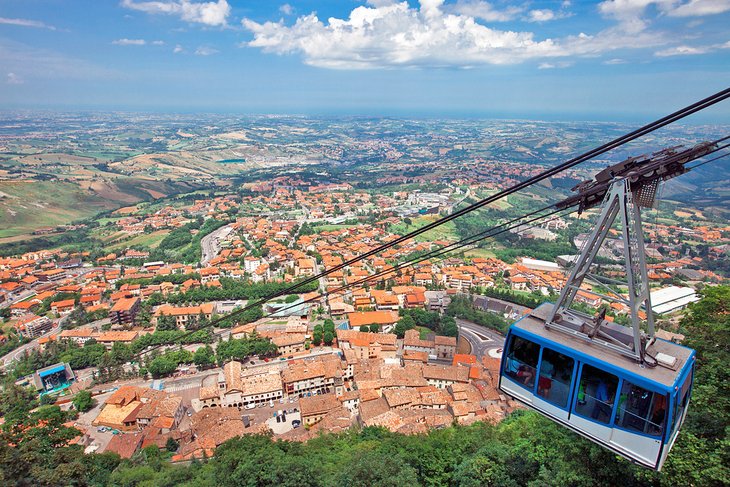
Although designed for the very utilitarian purpose of moving people from the lower Borgo to the upper Citta quickly and conveniently, San Marino's Funavia is a scenic experience of its own. On the trip up the slopes of Mount Titano to San Marino's historical center, you'll get sweeping views to 200 kilometers of Adriatic coastline, bird's-eye views of tiled rooftops, and vast panoramas of rolling green hills and farmland.
Of course, you'll save a lot of steps and time, too. Cars leave either station at 15-minute intervals beginning at 7:50 in the morning.
Address: Piazzale Campo della Fiera, Borgo Maggiore, San Marino
Wax Museum
The 100 figures in the Wax Museum represent significant historical characters, each dressed in the clothing of their day and arranged in scenes, often with other contemporaries. Benito Mussolini and Adolf Hitler are shown meeting, Jacqueline Kennedy is shown in audience with Pope John XXIII, and Giuseppe Garibaldi is at the bedside of his dying wife, Anita.
Others are shown with their inventions or tools: Marconi with his telegraph, Galileo with telescope in hand, Da Vinci holding a paintbrush - or at historic moments, such as President Abraham Lincoln's assassination in Ford's Theater. You'll learn a little about San Marino's history here, too.
Address: Via Lapicidi Marini 17, San Marino Città
Convent and Art Gallery San Francisco
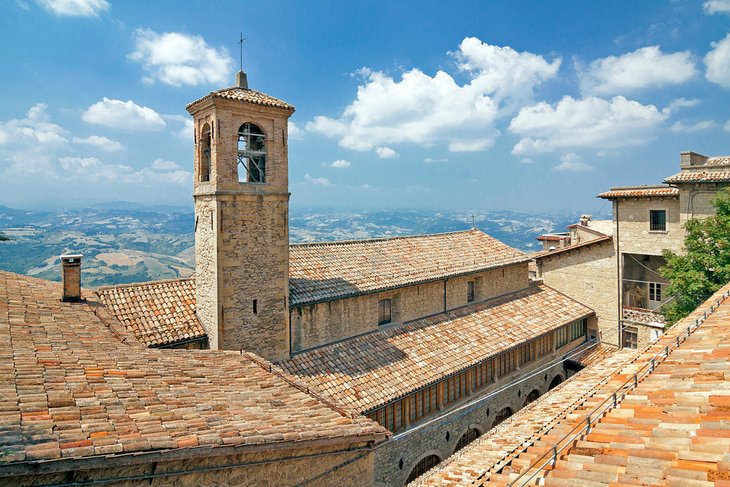
The San Francisco Convent, completed in 1400, is worth visiting for its beautiful cloister, as well as for the art displayed here. The church is now home to an art museum. In the sacred art part of the museum are works from several former Franciscan churches, including paintings on canvas and wood, furnishings, and other items illustrating the long history and influence of the order in San Marino.
The Art Gallery section is known for its collections of 16th-century paintings, which include works by Raphael, Guercino, and Gerolamo. The city's main entrance, a massive gate known as the Porta di San Francesco, is built into the walls of the church.
Address: Via Basilicius, San Marino Città
Tour the Castle Towns
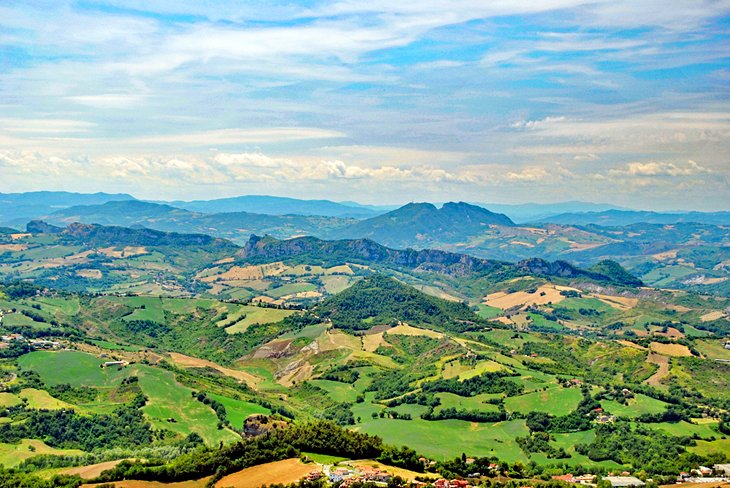
Surrounding the capital in the Republic of San Marino are a number of small villages set on peaks and spurs surmounted by castles of their own; most offer excellent views of the countryside and of Mount Titano, and several have interesting histories. Domagnano's fortress of Montelupo was constructed in 1463 and played a part in San Marino's war against the Malatesta of Rimini.
In the same year, Faetano, once the territory of the Malatesta, was taken over by San Marino, and they also acquired the Malatesta castle in Fiorentino. One of the most beautiful castles is in Montegiardino, a town that dates back at least to the Roman era. Both Borgo Maggiore and Serravalle have grown from villages to become important residential centers of San Marino.
Museum of Agricultural Culture and Traditions
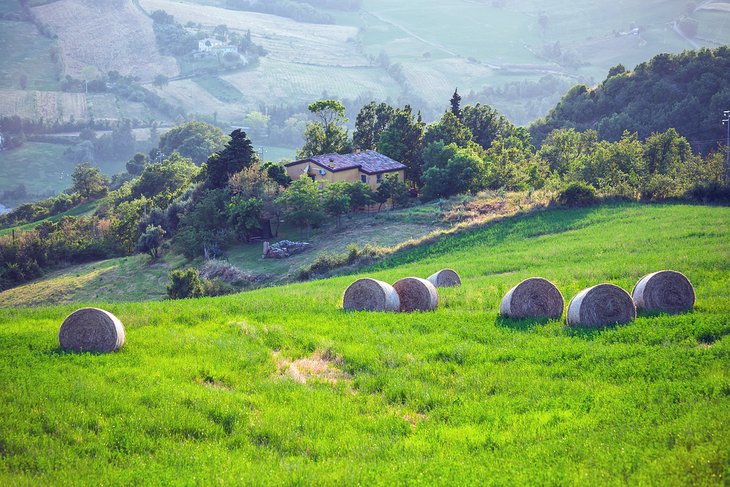
It may seem odd to find a fully restored and furnished farmhouse museum in a tiny principality that clings to a cliff-top, but San Marino is very proud of its long agricultural heritage. The House of Fabrica in Montecchio is one of the oldest patronal houses, dating from the mid-1700s at least.
Restored to its original state and furnished to recreate the daily lives of farm families in the villages around Mount Titano, the museum seeks to preserve something of the traditions and customs of rural life. Along with farm tools such as sickles and hoes, there are domestic tools, copper pots, coal-heated flat irons, a loom, a cradle, and other historic furnishings.
Address: Strada di Montecchio 11, San Marino Città
Coin and Stamp Museum
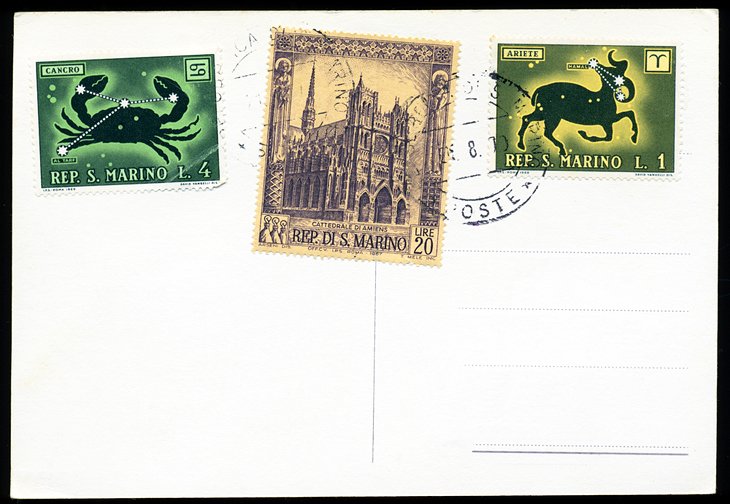
In July of 2021, San Marino inaugurated its new Coin and Stamp Museum, replacing the one formerly housed in the church at Borgo Maggiore. The republic has for many years issued regular commemorative series, which are sought after by collectors and are a not-inconsequential source of income for San Marino's treasury.
Along with the stamps issued by the republic since the mid-19th century are coins, which San Marino began minting in 1862. Since adopting the Euro, San Marino has continued to mint limited editions of gold coins for collectors. These are accepted as currency inside San Marino only.
In addition to the stamps and coins themselves, the museum displays artists' designs and sketches, both those subsequently used and those that were not. Changing exhibits are curated to interest both collectors and non-collectors, with historic artifacts and documents, as well as a sales point where you can buy stamps and coins.
Address: Piazzetta Garibaldi, San Marino Città
Gallery of Modern and Contemporary Art
Inspired by the San Marino International Art Biennales in 1956, which represented more than 500 artists, the Gallery of Modern and Contemporary Art complements the city's collections of historic works shown in the Convent of San Francisco. Since its opening, the gallery has grown, adding prize-winning works from later Biennales and by purchase and donation.
Today the gallery includes more than 1,000 paintings, drawings, watercolors, sculptures, and photographs by well-recognized contemporary and 20th-century artists, as well as emerging regional artists.
Appropriately for a collection of 20th-century and contemporary art, the museum is housed in a restored 1930s building. The four exhibition areas include one dedicated to Abstract and Realism relating to themes of World War II and the postwar period, and one featuring art representing new classicism with works from the 1970s to the present.
Address: Via Eugippo, San Marino Città
Cava e Loggia dei Balestrieri
A former quarry on the side of Monte Titano, used in the late 19th century to provide stone for restoring the Palazzo Pubblico, has been adapted for use as an open-air theater and the setting for San Marino's annual crossbow championships.
The San Marino Crossbowmen Federation revives the long tradition of crossbowmen, who defended the city in the Middle Ages. Each year on September 3, the feast day of Saint Marino, crossbowmen representing the nine San Marino castles compete in the Palio dei Balestrieri, a contest accompanied by pageantry, with historical costumes, parades, drums, and flags.
At other times you might see crossbowmen practicing in the Cava e Loggia dei Balestrieri, which is close to the cable car station. 131
Address: Via Eugippo, San Marino Città
Day Trip to Riviera Romagnola Beaches
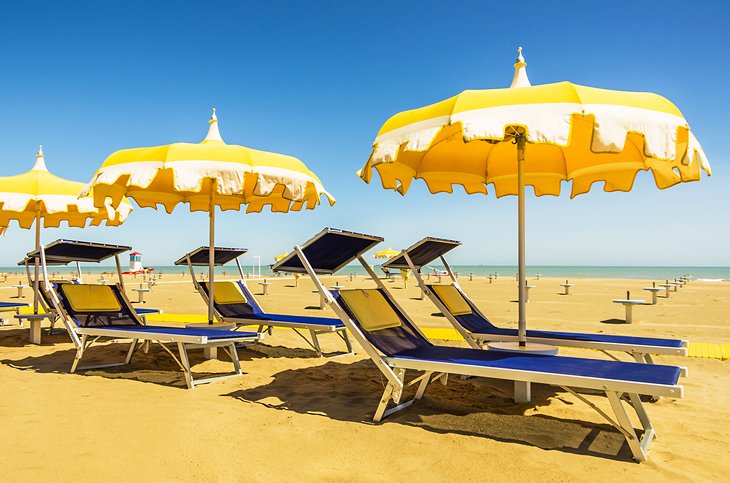
Miles of beautiful white sands lapped by the Adriatic line Italy's east coast in a holiday region known as the Riviera Romagnola. At the center of these is Rimini, only 22 kilometers from San Marino. All these towns have the usual Italian-style beach resorts, with rows of lounge chairs and umbrellas for rent, but many also have free beaches, most also equipped with changing rooms and lifeguards.
Heading south from Rimini there are excellent beaches at Rivabella, Riccione, and Cattolica, especially popular places for families, with gentle waves and safe Blue Flag beaches. North of Rimini are Viserba; Visebella; Bellaria; and the beautiful port of Cesenatico, with its little harbor full of vintage boats. The free beach of Tamerici at Cesenatico is planted with trees whose lush foliage provides natural beach umbrellas.
Map of Attractions & Things to Do in San Marino
More Related Articles on PlanetWare.com
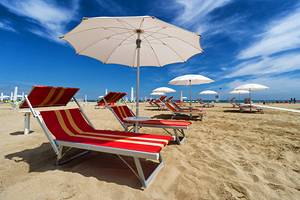
Seeking the Sun: After you've seen the beautiful beaches at Rimini and along the Adriatic, you may be interested in finding more of the best beaches of Italy. Or travel farther south to the port of Ancona, where you can catch a ferry to the Adriatic island of Hvar, whose beaches are among the top tourist attractions of Croatia.
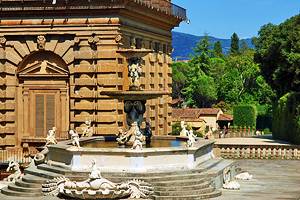
Exploring Florence: It's a beautiful drive through the forest parkland of the Apennine mountains to Florence, where you can wander the streets and marvel at the magnificent Cathedral of Santa Maria del Fiore and its beautiful Renaissance palaces. To find the best of these, use our helpful article on Exploring the Palaces in Florence: A Visitor's Guide.
